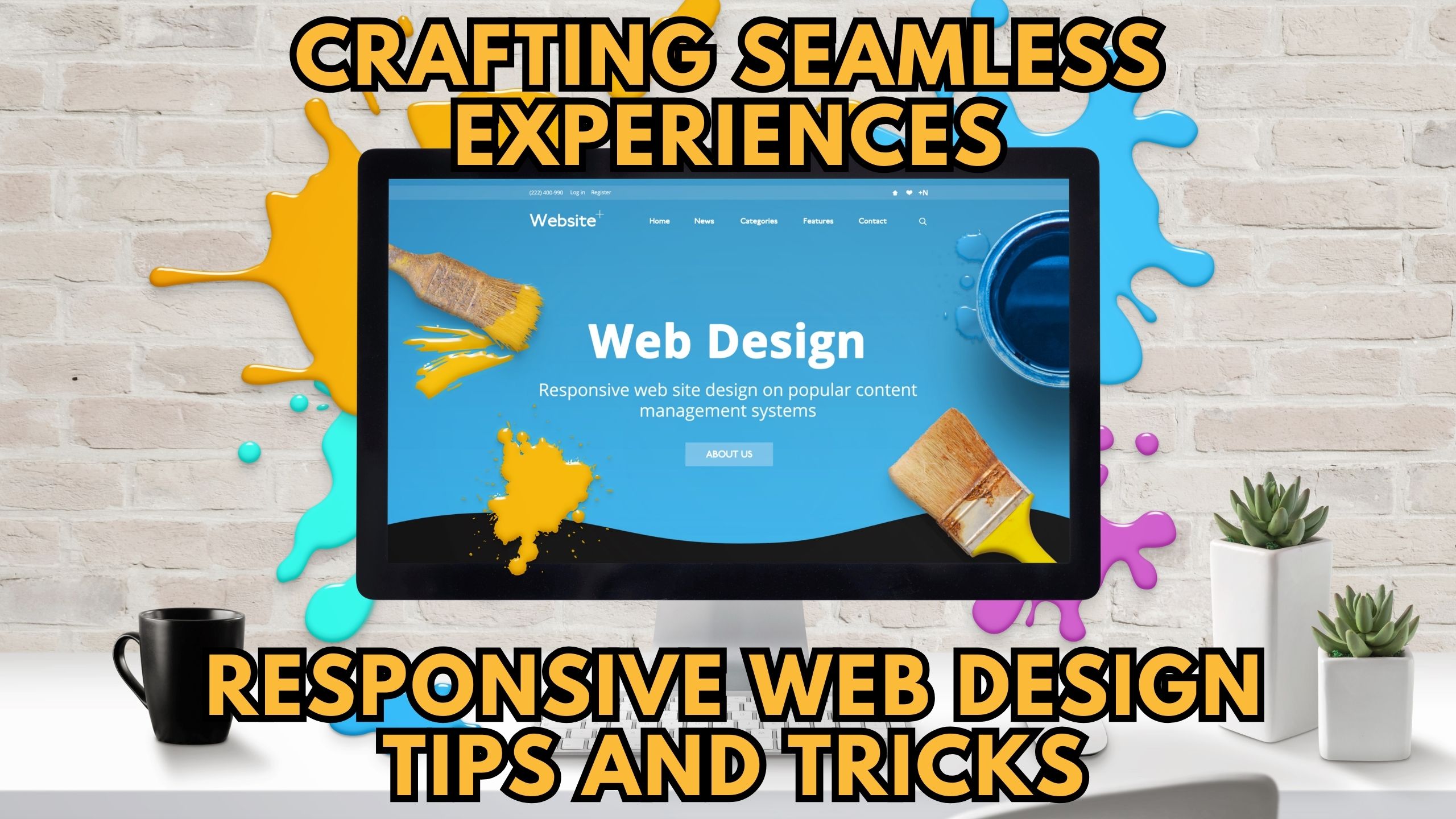Crafting Seamless Experiences: Responsive Web Design Tips and Tricks


Crafting Seamless Experiences: Responsive Web Design Tips and Tricks
In the dynamic world of web design, crafting seamless experiences for users across devices is paramount. Responsive web design plays a pivotal role in achieving this goal, ensuring that your website looks and functions flawlessly on various screen sizes. This comprehensive guide explores invaluable tips and tricks to enhance your responsive web design journey.
The Foundation: Understanding Responsive Web Design
1. Fluid Grids and Flexible Images: Building a Responsive Framework
The foundation of responsive web design lies in the use of fluid grids and flexible images. Adopting a fluid grid system allows your website layout to adapt proportionally to different screen sizes, ensuring a harmonious user experience. Similarly, incorporating flexible images prevents distortion and pixelation, maintaining visual integrity across devices.
Utilizing these techniques establishes a responsive framework, providing a solid base for your web design endeavors.
2. Media Queries: Tailoring Styles to Screen Characteristics
Media queries are a powerful tool in responsive design, enabling you to apply specific styles based on the characteristics of the user’s device. Whether it’s adjusting font sizes or rearranging content, media queries empower you to tailor the visual presentation for optimal user engagement.
Mastering media queries allows you to create a truly adaptive design that caters to diverse user preferences.
Responsive Web Design Tips and Tricks
3. Mobile-First Approach: Prioritizing User Experience on Small Screens
Embracing a mobile-first approach involves designing for smaller screens first and then progressively enhancing the layout for larger screens. This strategy ensures a user-centric experience on mobile devices, addressing the growing trend of mobile browsing.
Prioritizing mobile users establishes a strong foundation for a responsive and user-friendly website.
4. Performance Optimization: Ensuring Swift Loading Across Devices
Performance is a critical aspect of responsive web design. Implementing techniques such as lazy loading and optimizing images enhances the website’s loading speed. A fast-loading site contributes to a positive user experience, regardless of the device being used.
Prioritizing performance optimization guarantees a seamless experience, even in areas with slower internet connectivity.
5. User Testing: Validating Responsiveness Across Devices
Thorough testing is indispensable in responsive web design. Conducting user testing across various devices and screen sizes helps identify potential issues and ensures that your design is effective and user-friendly across the board.
Regular testing validates the responsiveness of your design, allowing for timely adjustments and refinements.
Recommended SaaS Products for Seamless Responsive Design
Enhance your responsive web design journey with these top-notch SaaS products that cater to various aspects of the design and development process.
1. Figma
Streamline Collaboration and Prototyping Figma is a collaborative design tool that facilitates seamless collaboration among designers, developers, and stakeholders. With real-time editing and prototyping features, Figma empowers teams to create and iterate on designs efficiently.
2. CSS Grid Generator
Simplify Grid Layout Creation CSS Grid Generator is a handy tool for creating responsive grid layouts effortlessly. Customize your grid, generate the CSS, and integrate it into your project seamlessly. This tool is especially beneficial for designers aiming to master grid-based layouts.
3. Lighthouse
Optimize Website Performance Lighthouse is an open-source, automated tool for improving the quality of web pages. It provides audits for performance, accessibility, progressive web apps, SEO, and more. Use Lighthouse to identify performance bottlenecks and optimize your website for a smoother user experience.
4. Am I Responsive?
Visualize Responsive Design Across Devices Am I Responsive? is a simple yet effective tool for visualizing your website’s responsiveness across various devices. Enter your website URL, and this tool displays how your site appears on desktops, laptops, tablets, and smartphones. It’s a quick way to validate your design’s responsiveness.
5. BrowserStack
Cross-Browser Testing Made Easy BrowserStack allows you to test your website on real devices and browsers in a cloud-based environment. Ensure your design looks and functions flawlessly across different browsers and devices, minimizing compatibility issues and delivering a consistent experience.
Conclusion
In the ever-evolving landscape of web design, responsive techniques are pivotal to creating seamless user experiences. By implementing fluid grids, mastering media queries, adopting a mobile-first approach, optimizing performance, and conducting user testing, you’ll be well-equipped to navigate the intricacies of responsive web design.
Ready to enhance your web design experience? Sign up for free on Subscribed.fyi Deals and unlock exclusive savings on top-notch SaaS tools. Elevate your craft with the ultimate subscription management solution.
Relevant Links:
- Subscribed.fyi Deals
- Subscribed.fyi
- BrowserStack
- Am I Responsive
- Lighthouse
- CSS Grid Generator
- Figma





